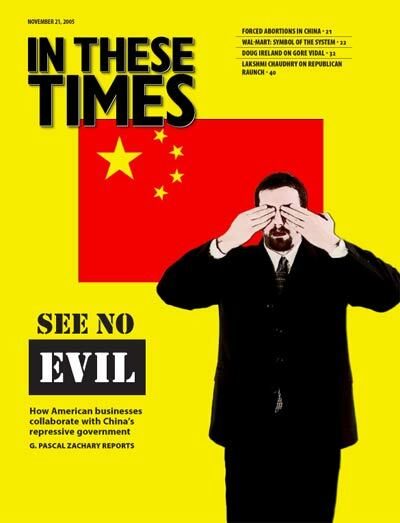In the last few months all manner of gas has been expended on the Valerie Plame case.
Did Karl Rove and Scooter Libby out Plame as a CIA officer to punish her husband Joseph Wilson IV? Who else in the White House knew of or condoned this crime? And is there some kind of medal we can bestow on Judith Miller, who suffered prison to protect her First Amendment rights?
Yes it makes for good drama, but in a perverse way the Plame case obscures the larger story. The media understandably finds it more interesting to ferret out the specific crimes of a Karl Rove than to reflect on the larger, more profound crime: how we were misled into invading Iraq. First, the Bush administration created a catalogue of lies and misinformation in order to justify invasion. Second, some prominent members of the national media parroted those lies.
And no one squawked louder than the New York Times’ Miller. As a former CIA analyst told Salon’s James C. Moore: “The White House had a perfect deal with Miller. [U.S.-funded Iraqi dissident Ahmed] Chalabi is providing the Bush people with the information they need to support their political objectives with Iraq, and he is supplying the same material to Judy Miller. Chalabi tips her on something and then she goes to the White House, which has already heard the same thing from Chalabi, and she gets it corroborated by some insider she always describes as a ‘senior administration official.’ “
For example, on September 8, 2002, Miller reported on the front page of the Times that intercepted aluminum tubes indicated that Saddam was developing a nuclear bomb. That day, Colin Powell, Condoleezza Rice and Dick Cheney all appeared on Sunday morning talk shows, citing Miller’s sensational exposé, which was debunked, with much less fanfare, five days later.
On May 26, 2004, Times Executive Editor Bill Keller explained that an internal audit “found a number of instances of coverage that was not as rigorous as it should have been.” He cited six faulty stories about the threat posed by Iraq, all but one of which was written or co-written by Miller, who was not mentioned by name.
Miller has not been hesitant to voice her belief that Saddam posed a threat. She told Moore, “I understood that these people … who hated us so much … that if they ever got their hands on WMD, they would use them. Do I have a belief that the WMD exist, and a fear? Yeah, I have a real fear for my country.”
Salon’s Juan Cole, however, cautions against viewing Miller as a puppet of the neocons. He writes, “In the end, it seems that Miller will go down in history not so much as a true believer as a useful idiot.”
Over the course of her legal travails, the Times published 15 editorials defending Miller’s right to protect her sources. In October, the Society of Professional Journalists bestowed Miller with its “First Amendment Award.” The decision was not without controversy.
The Northern California Chapter tried to introduce a resolution that defended her right to protect her sources, but was critical of her conduct as a journalist, particularly her decision to permit Libby to “hide administration responsibility for attacks on WMD critic Joseph Wilson by allowing [Libby] to change his pre-agreed attribution from ‘senior administration official’ to ‘former hill staffer.’”
In slamming the award to Miller, Fairness and Accurancy in Reporting’s Jim Naureckas wrote, “By rewarding a reporter who was apparently collaborating with and protecting a powerful official [Scooter Libby] in an effort to punish the free speech of a government critic [Joeseph Wilson], the SPJ is undermining, not advancing, the principles of the First Amendment.”
Out of prison, Miller promised that once she returned to work she would cover “the same thing I’ve always covered – threats to our country.”
Which means, we presume, she’ll be covering the White House.
Joel Bleifuss, a former director of the Peace Studies Program at the University of Missouri-Columbia, is the editor & publisher of In These Times, where he has worked since October 1986.









